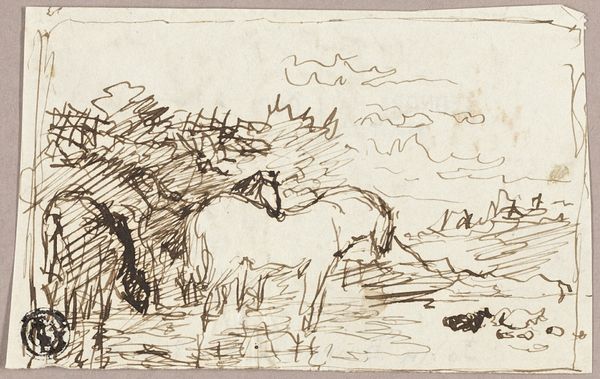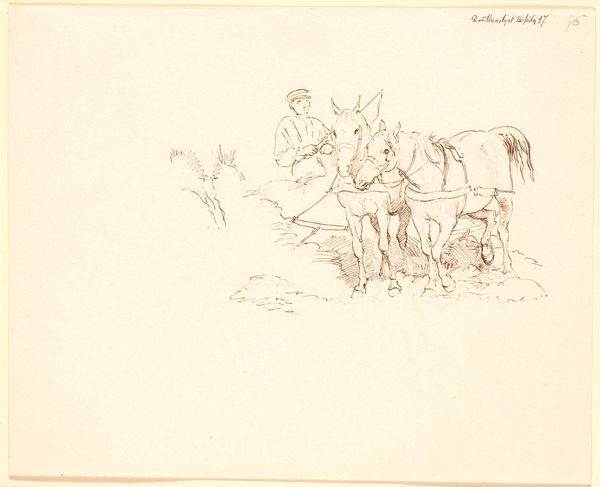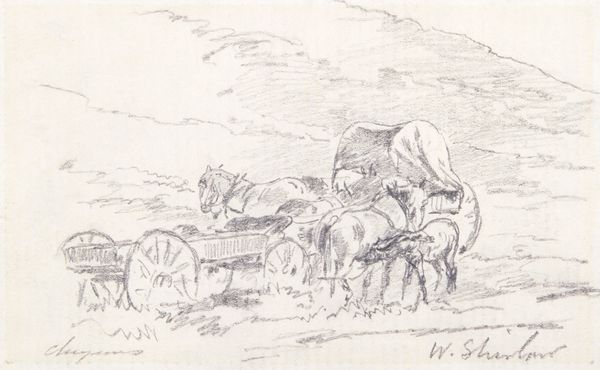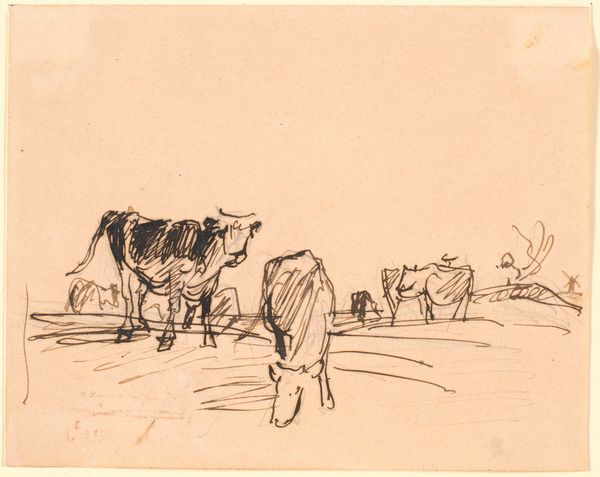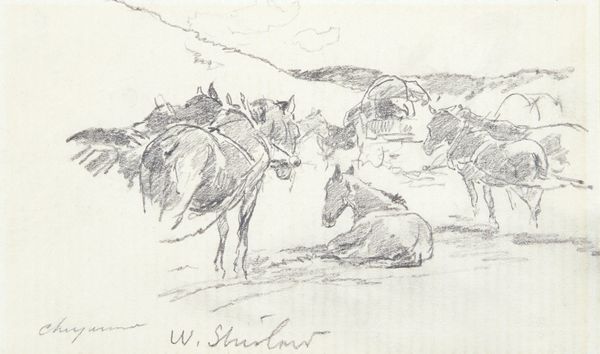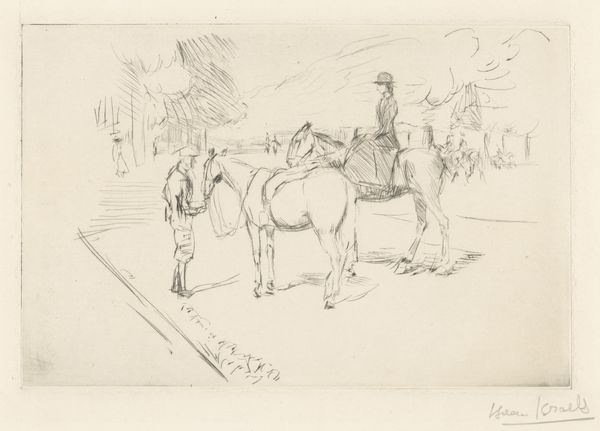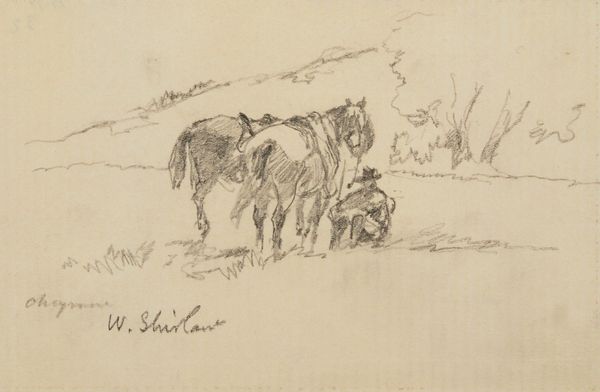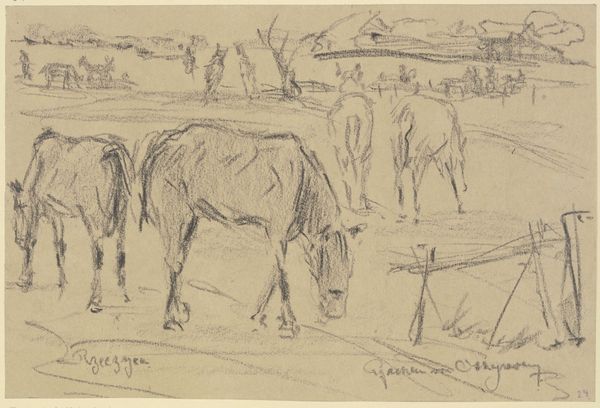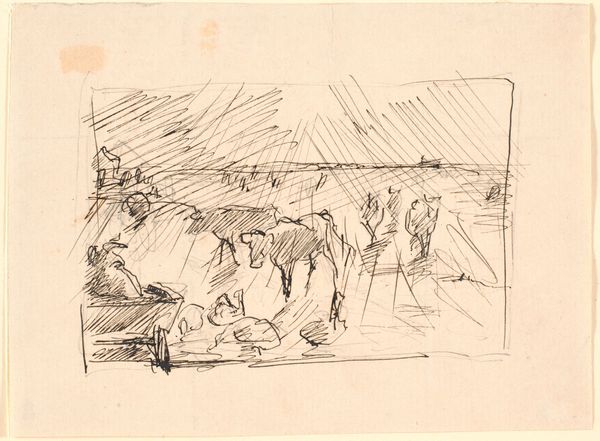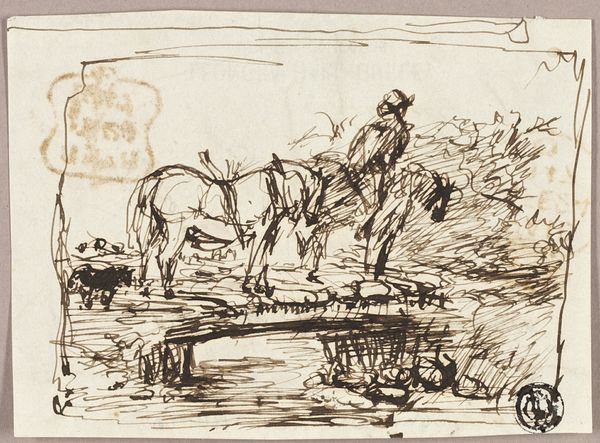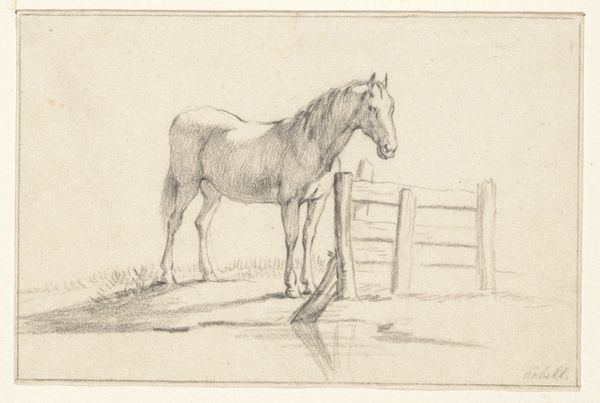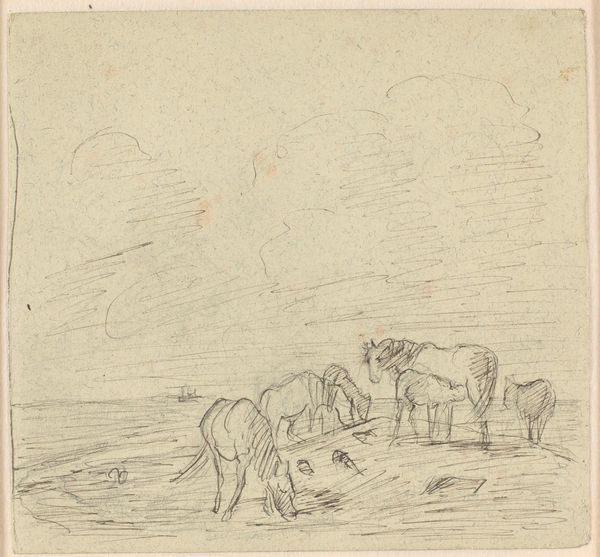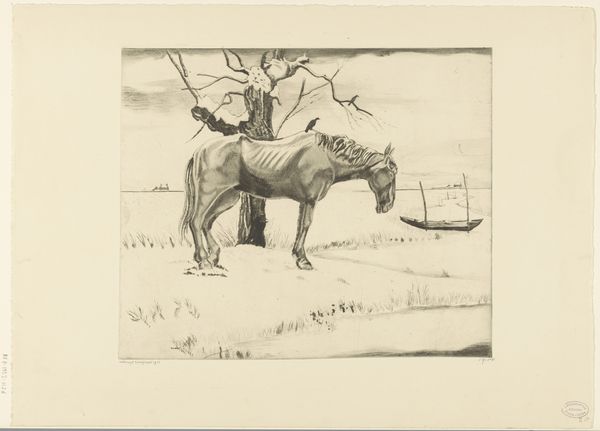
Dimensions: 247 mm (height) x 338 mm (width) (bladmaal)
Curator: We're looking at "Det var Sommer"—"It Was Summer"—a pencil drawing by Fritz Syberg, dating to 1928. Editor: It's evocative—a sense of heat, hazy distance, and a sort of drowsy calm. I see a field and a tree with a horse taking shelter from the sun beneath it. Curator: Indeed. Syberg’s materials here—paper and pencil—underscore the work’s accessibility, seemingly simple in execution yet hinting at a larger, romantic vision of rural life and labor. Pencil allows for a range of tone from nearly imperceptible to sharp darkness. The artist uses hatching and scribbling to evoke shade. What are the societal implications of portraying horses during the period? Is it the transition of farming to mechanization, so the horse's traditional role of working animal transitions to a depiction as farm pet? Editor: Precisely. Formally, look at the contrast between the almost frenetic scribbling used for the tree's foliage versus the relatively calmer, more controlled lines defining the horse’s musculature. The stark tonal variation and hatching, even the negative space within the landscape, contribute to a balanced yet dynamic composition. It strikes me as being so well observed. Curator: Let’s not forget that Syberg had close ties to the island of Funen. We need to see how this sketch contributes to a larger pattern of artistic activity centered on this landscape. Can the artist truly know the essence of an experience simply by the tools in hand? How might he have used the knowledge gained through making art for the upper class? Editor: Perhaps—yet to limit the analysis purely to context misses a great deal of the piece’s inherent visual poetry, don’t you think? To consider just the art production processes of this landscape undermines how it functions compositionally with the foreground element as a subject and how its gaze is drawn into the light, blurry background, creating the effect you see in summer. It also helps one empathize with the poor horse and how its stance shows it trying to escape the heat. Curator: I’m not disputing the composition, but let's acknowledge how Syberg, by using humble materials to portray the rhythms of rural existence, democratized the art-making experience and idealized agricultural toil. The simple line drawing has been given monumentality that encourages closer looking, don't you think? Editor: An interesting observation. For me, it showcases how such humble media in the hand of an expert gives it beauty and expression that could be further developed to communicate more poignant commentary. Curator: I see what you mean—it prompts a deep meditation about how labor, even at leisure, is inseparable from its historical moment and artistic representation. Editor: And conversely, it teaches us how timeless forms and balanced visual language evoke such relatable feelings.
Comments
No comments
Be the first to comment and join the conversation on the ultimate creative platform.
